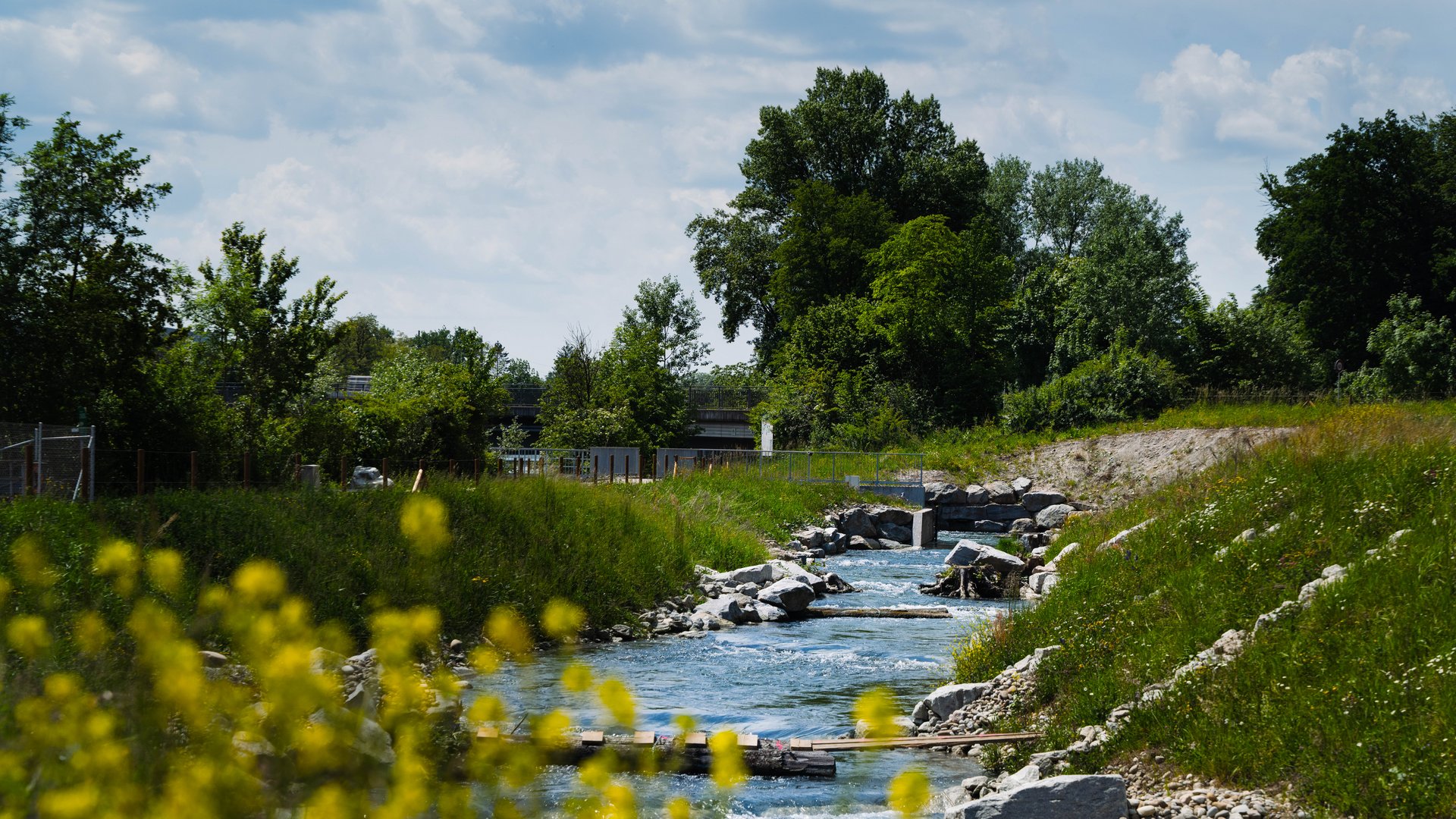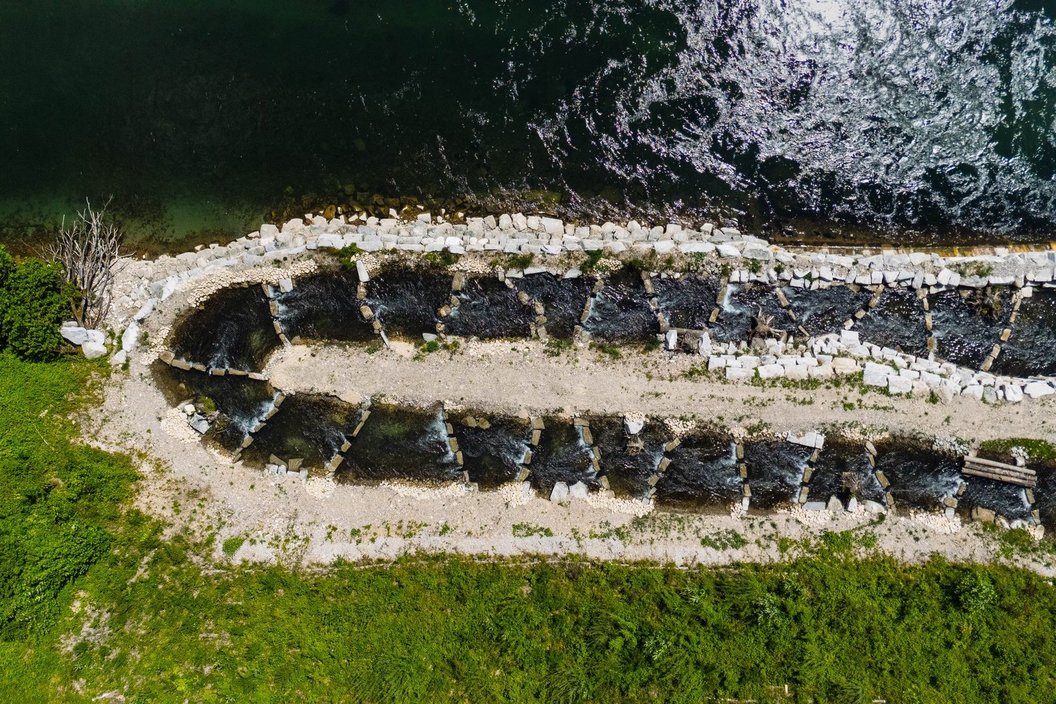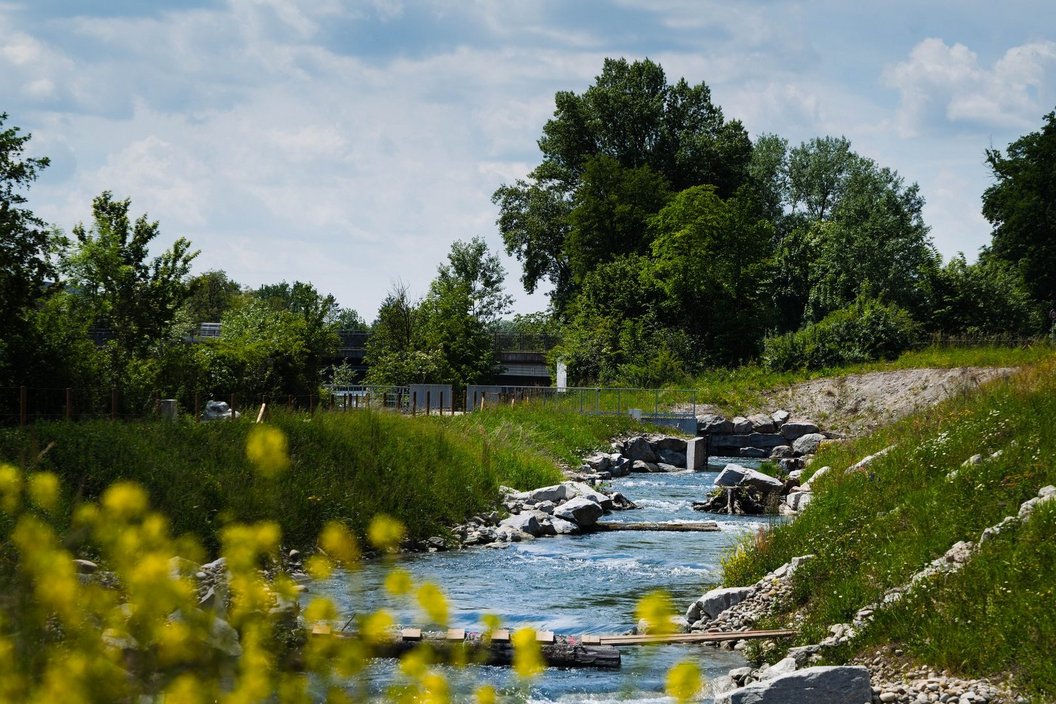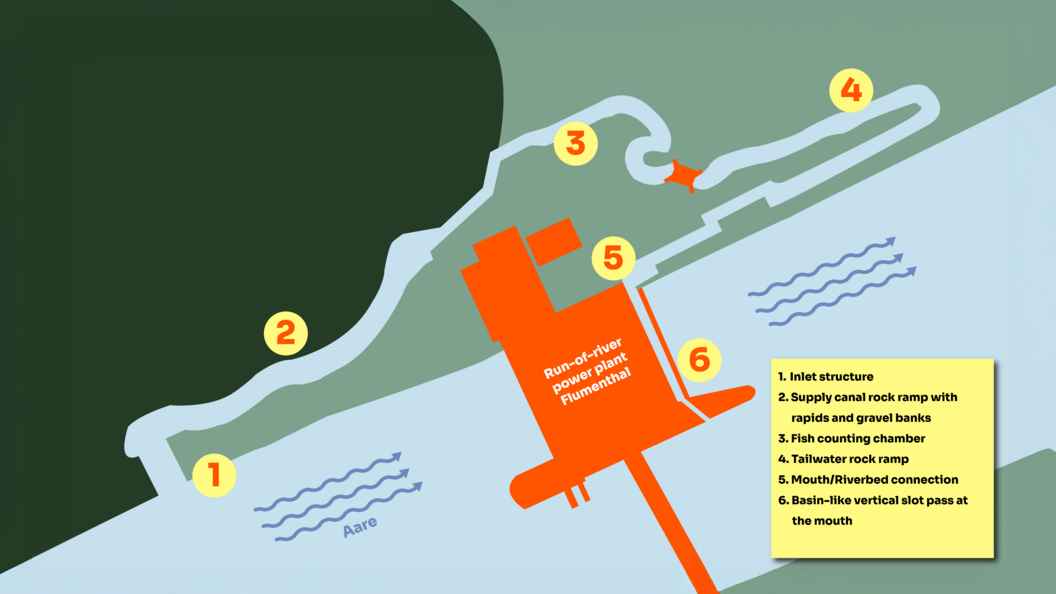At the Flumenthal power plant, fish and other aquatic organisms can now swim upstream the Aare from the tailwater to the supply canal in a near-natural fish pass. The fish pass meets the latest standards and is one of the largest newly created artificial waters in the canton of Solothurn. It is located on the left bank of the Aare in the direction of flow at the level of the power plants in the commune of Riedholz (SO) and covers a difference in altitude of around eight metres. After around two years of work, the new fish ladder will replace the old facility. This dates from 1970 and no longer met the requirements for fish migration. A total of around CHF 20 million was invested in the construction of this plant via the national fund “Netzzuschlagsfonds” as part of the ecological refurbishment of hydropower.
Improving the fish pass and aquatic ecosystem
Alpiq Hydro Aare worked in collaboration with the federal government, the canton of Solothurn and environmental protection organisations to develop a suitable solution for the Flumenthal hydropower plant that is tailored to the species of fish that live in the Aare, such as barb, perch and chub. In addition to the aquatic continuity, the fish ladder offers a diverse habitat for the aquatic fauna.
It consists of three parts: a supply canal rock ramp with rapids and gravel banks, a longer ramp with 2–3 blocks each, various transverse bars and around 37 other basins in the form of a tailwater rock ramp, and the basin-like, concrete vertical slot pass at the mouth. A fish counting chamber means the effectiveness of the new fish ladder can be checked regularly. Depending on the run-off of the Aare, an average of 3 to 5 m³ of water flows through the fish ladder per second. The structure regulates the amount of water and adapts it to the level of the Aare in the supply canal.



